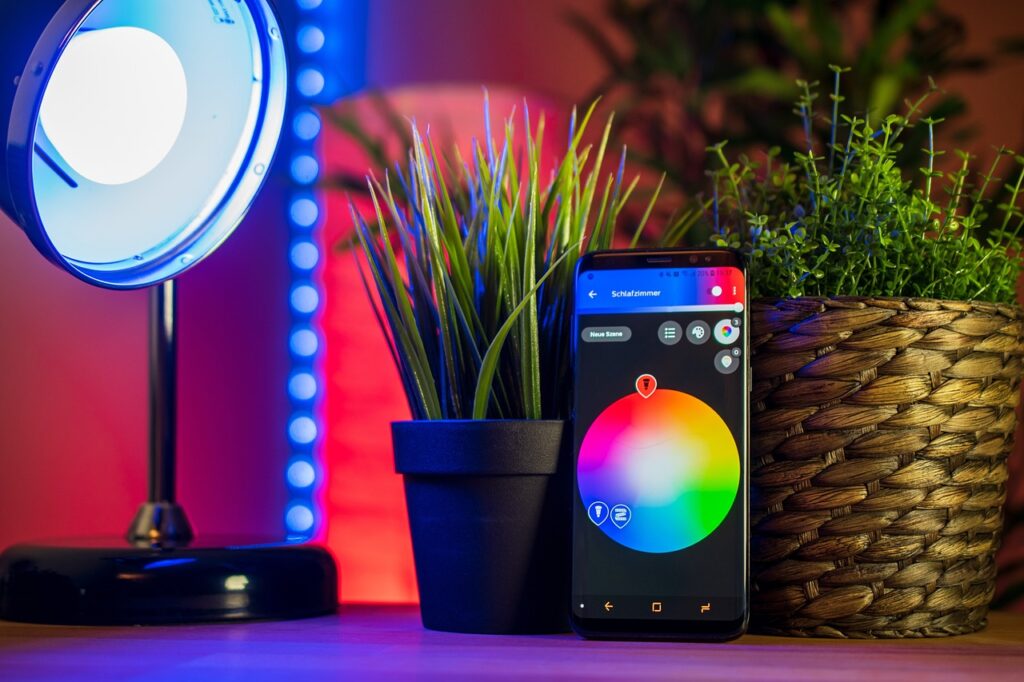Smart Lighting: Practical Uses vs. Aesthetic Improvements

Smart lighting is transforming the way we light up our homes and workspaces, combining practical benefits with aesthetic enhancements. Whether it’s energy savings or setting the perfect mood, it offers an array of options. Let’s explore the basics, practical applications, aesthetic improvements, and top Amazon product recommendations to get you started.
The Basics of Smart Lighting
How it Works
It uses LED bulbs that can be controlled remotely through a smartphone app, voice assistant, or home automation system. Connected to a home network, users can adjust brightness, colours, and scheduling with ease, creating a more dynamic and controlled lighting experience.
Components of a Smart Lighting System
A standard setup includes smart bulbs, a hub or bridge for connectivity, and a control interface such as a smartphone app or smart speaker. Many systems also come with motion sensors or light strips to add functionality, making it simple to customise the lighting environment.
Practical Uses
1. Energy Efficiency
One of the main benefit is energy efficiency.
- Reduced Energy Consumption: Smart LEDs use much less electricity than traditional incandescent bulbs. Many have dimming capabilities and can turn off automatically when not in use, further reducing energy waste.
- Automated Scheduling: you can schedule it to turn on or off at specific times, preventing energy waste when lights are left on accidentally.
2. Enhanced Security
It enhances home security by illuminating dark spaces and giving the appearance that someone is always home.
- Motion Detection: Lights with motion sensors can deter potential intruders by lighting up dark areas when movement is detected.
- Remote Control: Even while you’re away, you can control your lights remotely, adding a layer of security by making it seem as if someone is always present.
3. Convenience and Control
It offers a level of convenience that’s hard to beat.
- Voice Activation: Using Alexa, Google Assistant, or Siri, you can control your lights hands-free, simplifying daily tasks.
- Integration with Other Smart Devices: Smart lighting integrates with other smart home devices, creating a streamlined and highly functional home environment.
4. Health and Wellness
Smart lighting can support health and wellness by simulating natural light patterns.
- Circadian Rhythm Support: By mimicking daylight patterns, smart lighting helps regulate the circadian rhythm, which can improve sleep quality.
- Mood Regulation: With adjustable light colour and intensity, you can create environments that enhance mood and help reduce stress.
Aesthetic Improvements
1. Ambiance Creation
Smart lighting allows for easy customisation to fit any mood or occasion.
- Customisable Colour Schemes: Change the colours to fit the mood, whether it’s a relaxed evening or a lively party.
- Scene Setting: Save specific lighting scenes for various occasions, from cosy dinners to festive gatherings.
2. Architectural Highlighting
Smart lighting can enhance architectural features and decor with specialised light placements.
- Spotlighting Key Features: Use spotlights to highlight unique architectural elements like vaulted ceilings or beams.
- Showcasing Artwork and Decor: Position smart lights strategically to make artwork or decor stand out, adding vibrancy and focus.
3. Outdoor Enhancements
The benefits of smart lighting extend to your garden and outdoor spaces.
- Garden and Landscape: Light up your garden for a magical ambience with energy-efficiency.
- Festive Lighting for Events: It simplifies decorating for holidays and special events with programmable and customisable lighting displays.
Top 10 Product Recommendations:
Here’s a curated list of top products available on Amazon to help you start or upgrade your setup:
Comparing Practical Uses and Aesthetic Improvements
To maximise the benefits of smart lighting, it’s essential to balance functionality and aesthetic appeal. Practical uses like energy efficiency and security make daily life easier, while aesthetic enhancements elevate the ambience of your home. While there may be a higher initial cost, the long-term benefits make it a wise investment.
Conclusion
Smart lighting combines practicality and beauty, offering energy savings, enhanced security, and the ability to transform spaces with just a few taps. As technology advances, new features and greater compatibility promise even more exciting options for the modern home.
Find out more about other smart home ideas here…
FAQs:
What is the lifespan of smart lighting systems?
Smart LEDs typically last between 15,000 to 25,000 hours, far outlasting traditional bulbs.
Can smart lighting be installed in older homes?
Yes, retrofit solutions are available for installing smart lighting in older homes without major rewiring.
How does smart lighting save money?
Smart lighting saves money by reducing energy usage and extending bulb lifespans, cutting down on electricity and replacement costs.
Are smart lights secure from hacking?
Generally secure, but it’s crucial to use strong passwords and keep software updated to reduce hacking risks.
What are the best smart lighting brands?
Top brands include Philips Hue, LIFX, TP-Link, and Sengled, all known for quality and innovative features.
Smart LEDs typically last between 15,000 to 25,000 hours, far outlasting traditional bulbs.
Yes, retrofit solutions are available for installing smart lighting in older homes without major rewiring.
Smart lighting saves money by reducing energy usage and extending bulb lifespans, cutting down on electricity and replacement costs.
Generally secure, but it’s crucial to use strong passwords and keep software updated to reduce hacking risks.
Top brands include Philips Hue, LIFX, TP-Link, and Sengled, all known for quality and innovative features.










